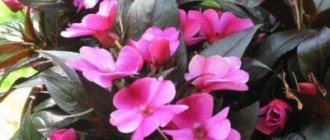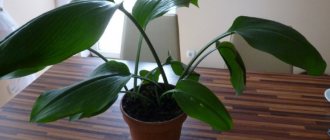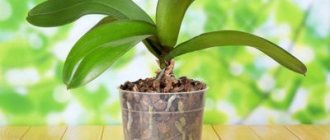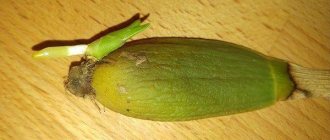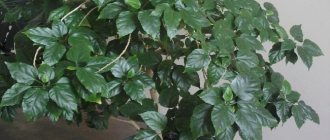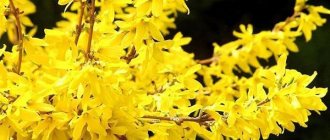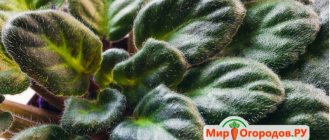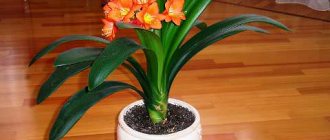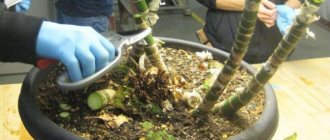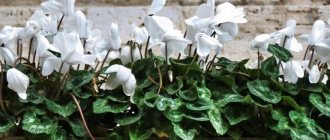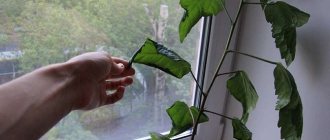Clivia care
Many gardeners love clivia for its simple beauty, bright, rich shades in the middle of winter, when you really want to feel the presence of spring. In February, when clivia inflorescences bloom, the house seems to be transformed, filled with sun and warmth, largely thanks to the red-orange palette of flowers. Despite its rather decorative appearance, clivia is very unpretentious; gardeners note that it can only be remembered when it’s time to water. What other features are there of growing this African miracle at home?
Homeland and appearance of clivia
Clivia belongs to the amaryllis family. It is an evergreen, perennial plant that does not have a stem and blooms profusely. Clivia is native to South Africa.
The leaves of the plant form a basal rosette and are arranged in the shape of a fan. The shape of the leaf plate is of two types: linear and xiphoid.
The rhizome of clivia is quite powerful; the bases of the leaves are attached to it. Considering the shape of the root system, it is difficult to classify clivia as both bulbous and rhizomatous plants; it is located approximately in the middle between these two forms of root systems. For clivia, the roots are a reservoir for the accumulation and storage of nutrients and water reserves.
The flowers resemble bells in shape, come in red and orange, and are collected in umbrella-shaped inflorescences that are attached to the peduncle. The flowering period of one inflorescence lasts up to three weeks.
Watering and air humidity
Clivia should be watered sparingly, as the top layer of soil dries, using soft, settled water. Water should not be allowed to remain in the pan. During the dormant period, stop watering, only slightly moisten the soil if the clivia leaves wither.
After the formation of buds, it is necessary to water the clivia more often, more abundantly and with warm water.
The level of air humidity for clivia is not particularly important. In hot weather, you can occasionally wipe the leaves with a damp sponge, refreshing the plant and removing dust.
Lighting requirements
Bright, diffused light is best for clivia. Direct sunlight will cause burns on the leaves, which will appear as brown spots. The optimal place for growing is western and eastern windows. If you have to grow clivia on a south-facing window, the plant must be shaded from the sun. Growing in a north window slows down the growth process of clivia and negatively affects flowering, which may not occur.
In summer, clivia feels good on a balcony, loggia or veranda in partial shade.
Temperature
During the growth period, that is, in spring and summer, clivia is grown at temperatures from +20 to +25 degrees. In autumn, approximately from the second half of October, the temperature is reduced to +18-+20 degrees.
Keeping clivia during the dormant period at high temperatures has a negative effect on flowering next year.
Feeding and fertilizer
Clivia needs additional nutrition, especially during the period of active growth. In spring and summer, liquid organic and mineral fertilizers are used as fertilizing. They are alternated, feeding the plant once every two weeks.
Rest period
Providing a period of rest is an important part of clivia care, otherwise the plant will not bloom.
In the second half of September or early October, it is necessary to place the flowerpot with a flower in a shaded place and reduce watering and fertilizing as much as possible, however, you need to regularly monitor the condition of the leaves. If the leaf blades begin to wither, you can moisten the soil a little. After 2-3 months, you can resume your usual care for clivia.
The older the plant, the longer the dormant period is required.
What to do if the leaves darken?
There may be two main reasons.
- The flower is affected by a pest - scale insects (shield aphids). It multiplies quickly, forming dark gray spots on the foliage and stem. The larvae, which rapidly spread throughout the plant, are destroyed by spraying with a soap-tobacco mixture with the addition of kerosene or denatured alcohol. Adults can be removed by wiping the leaves with a swab soaked in alcohol.
- The second reason for the formation of spots can be sunburn . It must be remembered that clivia, with all its love for light, is very sensitive to too bright sun. Therefore, the Kaffir lily located on the southern window must be shaded or placed on the eastern or western windowsill.
Date: 01/17/2016.
Clivia transplant
During the first three years of Clivia's life, annual replanting is necessary in the spring. Adult plants are replanted at the end of the flowering period once every three years using the transshipment method. Experts recommend not to touch or disturb the clivia unless unnecessarily necessary. This is due to the fact that the flower has fragile roots that are easily damaged and thereby destroy the plant.
If the roots are broken during the replanting process, excessive watering will lead to complete rotting of the plant. If the roots are damaged, they must be carefully treated with ash or crushed coal.
In years when clivia is not replanted, in the second half of winter it is necessary to remove the top layer of soil and replace it with fresh one.
Watering
Clivia should be watered sparingly. Stagnation of water is unacceptable. Before the next watering, the top layer of soil in the pot should dry well.
Water for irrigation should be settled and warm . 10-15 minutes after the procedure, the water should be poured out of the pan.
In the fall, after clivia blooms, the frequency of watering must be gradually reduced , thus preparing the plant for the dormant period. At the end of autumn - beginning of winter, clivia does not need watering.
When the flower arrow appears, watering must be resumed. However, at first it should be meager. When buds appear, the regularity and amount of moisturizing must be gradually increased to the usual norm.
Clivia propagation
Types of reproduction:
Propagation by seeds
To obtain seeds at home, you will need artificial pollination. From the moment of pollination to the complete ripening of the seeds, an average of 9 to 10 months passes. It is necessary to plant fresh seeds collected this year. The best period for planting seedlings is from November to April. The composition of the earth mixture required is as follows:
- Sod land - 1 part;
- Peat soil - 0.5 parts;
- Sand – 1 part.
The distance between seeds must be maintained at least 2 cm and the same distance must be between the rows.
The first shoots appear after a month. When the first full leaf appears, the plants are planted in separate pots with a diameter of 7 cm. Five months later, 4 leaves already appear on the young bushes. A year later, young clivias need the first transplant, which is carried out using the transshipment method. Each plant will require a pot with a diameter of 9-10 cm, and after another year the diameter of the pots increases to 12-13 cm.
For adult plants, you need to change the composition of the soil mixture:
- Sod land - 1 part;
- Peat soil – 1 part;
- Humus soil - 1 part;
- Sand – 1 part.
Young clivia plants grow very slowly, two-year-old shoots have no more than 4 pairs of leaves, then two pairs of leaves appear on the bush every year.
Three-year-old plants need to organize a dormant period; for this, starting in September, a pot of clivia is placed in a dry place for several months. After such a “shake-up”, a third of the young plants form a peduncle. If the clivia has not bloomed, it continues to be cared for as an adult plant, not forgetting the dormant period.
Vegetative propagation (by children)
This is the most acceptable way to propagate clivia at home. It is combined with a transplantation procedure, during which young shoots - babies - are separated from the adult plant. It is important to remember that the plant has very fragile roots, damage to which can lead to their death. A young clivia should have at least four leaves. The optimal period for transplanting and dividing adult clivia is after flowering.
For rooting, the shoots are planted in sand, in flowerpots with a diameter of no more than 7 cm and kept at a temperature no higher than +18 degrees. During this period, it is necessary to slightly limit watering to avoid plant rotting.
After rooting, clivia can be transplanted into an earthen mixture consisting of equal parts of leaf, turf and greenhouse soil. The first flower stalks appear after a few years.
The soil
For clivia, loose, light, slightly acidic soil is suitable.
If you buy soil in a store, you can take a substrate for orchids - it is nutritious, and clivia will form and release a peduncle faster.
If we talk about preparing the mixture yourself, you can choose several options:
- Turf soil, peat, sand, humus (2:1:1:1);
- Leaf, turf soil, sand (2:2:1);
- Turf soil, humus soil, peat (2:1:1)
Flowering and pruning clivia
As a rule, flower stalks appear on the plant in February. The lifespan of one peduncle is up to a month, the flowers on it bloom gradually, their number reaches 30 pieces. Some gardeners use artificial pollination so that after flowering ends, fruits appear on the plant, which change their color from green to rich orange-red. You can collect the seeds only after they become soft.
If a peduncle does not appear on the clivia, this means that there was no rest period necessary for flowering, during which the plant accumulates strength to form buds. There are situations when a peduncle appears, but it does not have enough strength to develop. This indicates that the clivia was exposed to the cold for too long at the end of the dormant period. To correct the situation, you need to water the flower with warm water (+40 degrees).
When an arrow appears on the plant, it must be moved to a warmer place and the frequency of watering increased. This care regime is necessary for clivia until the length of the arrow reaches 15 cm. Then the plant should not be touched, moved to another place or disturbed.
At the end of flowering, it is necessary to trim the dry peduncle. In order to cause abundant and long-lasting flowering, it is better to choose small flowerpots in which the root system barely fits.
If for some reason you had to touch a flowerpot with clivia, it is important to place it in the direction of growth of leaves and buds, otherwise there is a high risk of leaves falling and buds dying.
About parasites
Growing clivia may encounter problems such as pests. The most common are scale insects (shield aphids) and mealybugs. They can infect a flower due to constant stagnation of water in the soil, cold air in the room, or signs of dampness. The plant is also sensitive to fungal diseases (gray rot, powdery mildew). When infected, brown spots appear on the leaves, and continued high humidity leads to complete rotting.
The adult scale insect sits motionless, but its larvae quickly spread throughout the flower, causing the formation of brown spots in the form of growths on the leaves.
Shchitovka
Mealybugs look like white cotton wool, which lies softly on the leaves. At the initial signs of damage, it can be easily collected with a damp cloth, which can then be washed with soap. If it is difficult to do this manually, you should treat it with an insecticide. You can repeat the treatment of the leaves several times until the flower is completely cleansed.
Mealybug - photo
Outwardly, the spider mite appears unnoticed on the plant. The size of its adult specimen does not exceed 1 mm (usually 0.5 mm). The color of the insect varies from green to brown. To ensure its vital functions, the mite sucks juice from the clivia. At the site of such feeding, transparent small dots appear on the leaves. When there are a lot of them, the leaf turns yellow, begins to dry out and falls off. You can cope with such a disease with the help of Fitoverm.
Spider mite
Aphids are characterized by colonies on the lower surfaces of leaves. She also feeds on its juice, but the result is their deformation and twisting. Undrinked liquid can come to the surface in places where aphids feed and form the so-called “Honeydew”. It is better to immediately cut off the area of the leaf affected by aphids and treat the cut area with a plant disinfectant.
Aphid
In general, the initial stage of colonization of a flower by pests requires a mechanical method of cleansing (by picking out bugs, wiping with soapy water, alcohol, smoking with tobacco smoke, treating with garlic juice, etc.) or using insecticides.
Diseases and pests of clivia
Scale insects and mealybugs may appear on the plant.
Shields
Brown spots appear on the leaves of clivia, as a result the leaf blade dries out and dies. How to fight: first, you can wipe the leaves of clivia with a soapy solution and then spray it with a chemical.
Mealybugs
These insects attack all parts of the plant except the root system. If there is a large concentration of pests, clivia may die. How to fight: wipe the leaves with soapy water, wash in the shower and spray with a chemical.
Clivia miniata
Large, belt-shaped opposite leaves, often more than 5 cm wide and 50–60 cm long, tightly cover each other, forming a kind of fan, making the plant decorative. In spring or early summer, a flower arrow up to 50 cm tall develops among the leaves, bearing a lush multi-flowered umbrella. Large inflorescences of 10–20 small funnel-shaped orange or yellow flowers do not bloom immediately, but gradually, so the plant blooms for a long time, several weeks. The garden form Striata is known with white or yellow longitudinal stripes on the leaves.
Note to the florist
Why do the tips of clivia leaves dry out?
As a rule, dry plant tips indicate excess moisture in the soil.
Why doesn't clivia bloom?
There may be several reasons. Most often, the absence of peduncles is associated with improper maintenance of the flower during the dormant period. In addition, clivia does not bloom if the room temperature is low, the plant lacks moisture, nutrients and lighting.
Brief description of the plant
Clivia is a perennial evergreen plant. Belongs to the amaryllis family. South Africa is considered to be the birthplace of this flower. In nature there are about 5 species.
The clivia flower is a bulbous plant with long, narrow leaves of a rich green color. Clivia also has a long peduncle. During the flowering period, this plant looks truly fascinating. The inflorescence has several flowers painted in a rich orange color.
Clivia care video
Clivia is a surprisingly delicate and attractive plant that has captivated many gardeners with its unpretentious character and lush, bright flowering, which begins in the midst of a cold winter.
In order for clivia to feel comfortable at home, it is enough to provide it with the minimum conditions necessary for flowering indoor plants. The plant reproduces easily and is quite resistant to pests, which makes caring for the flower easier. You can also share your secrets for caring for clivia. If you have questions, ask them in the comments below, we will be happy to answer them.
